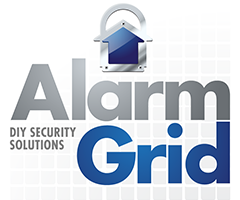Wireless Recessed Door/Window Alarm Sensors


Door and window alarm sensors represent possibly the most common add-on devices used with security systems. These devices let your system know when a door or window is opened. Most door and window sensors are surface-mounted. A surface-mounted door and window sensor will be visible from the outside of the door or window. While these devices are very unobtrusive, some users might want something that is even more hidden. For those users, recessed door and window sensors make a great option.
A recessed door and window sensor will be hidden in a door or window frame. The associated magnet will typically be aligned with the sensor and hidden in the door or window itself. Some recessed sensors use a plunger switch, and no magnet is needed. Either way, the sensor will be out of open view when the door or window is closed. This is perfect for achieving a more aesthetically pleasing installation.
While recessed door and window sensors are more effectively hidden than surface-mount contacts, there is something to keep in mind if you plan to use these sensors. Holes will need to be drilled in the door or window and its frame. This is to accommodate the sensor and its magnet. Installing these holes is fairly simple. They are just small openings to place the sensor and magnet. But some DIY users may want to avoid this. Other users may be living in apartments or rental homes and have landlords who do not want them drilling holes. In either case, it might be best to go with surface-mount sensors in these situations.
The recessed door and window security sensors listed on this page are all wireless sensors. They will communicate with the panel using wireless radio frequencies. You will need to make sure that these sensors communicate at a wireless frequency that is compatible with your alarm system. You will also need to program the sensors with your security panel. Most wireless door and window contacts can be auto-enrolled with a system. Programming will also involve setting a Response Type or Sensor Group. Make sure to save any programming changes.
You will also want monitoring service to get the most out of your wireless recessed door and window alarm sensors. This is needed to have your system send outbound communication signals in the event of an alarm. If an intruder opens your door or window while your system is armed, the system will respond depending on the Response Type for the zone. An alarm may occur immediately, or you may have a short Entry Delay period to disarm the system before an alarm occurs. But when an alarm does happen, you will need monitoring service for the system to take action.
There are two main types of monitoring plans to choose from. These are central station monitoring plans and self-monitoring plans. Central station monitoring means that your system is connected with a 24/7 monitoring station for assistance from highly trained operators in the event of an emergency. Most jurisdictions will allow for automatic dispatch from the local authorities when a central station operator reports an alarm. If you have self-monitoring, then you can receive text and/or email alerts during alarm events. It will then be up to you to contact the authorities.








